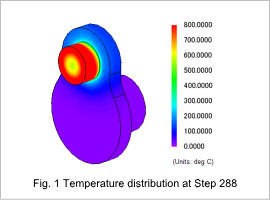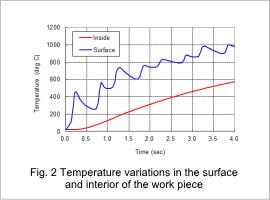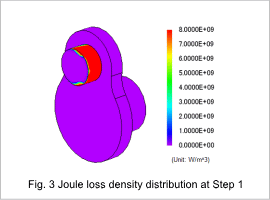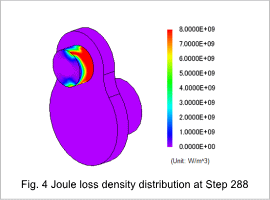*Please prepare a license ID and password for the license administrator.
*It is different from the service for JMAG WEB MEMBER (free membership). Please be careful.
Overview
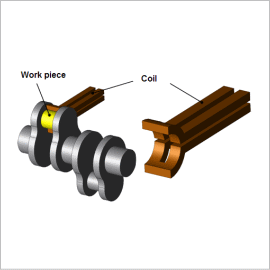
Machine parts like shafts and gears are made to be resistant to wear and tear. This is accomplished by giving them a certain degree of flexibility by maintaining their interior toughness while increasing the hardness of their surfaces. By using high-frequency induction heating, which is a type of surface hardening method, the part is heated rapidly on only its surface by a high frequency power source. This process also has many other benefits, such as providing a clean working environment because it uses electrical equipment, being very efficient, and providing uniform results for each product. This is why it is being aggressively implemented in the field.
With induction hardening like the kind used on the work piece in this analysis, the main requirement is to heat a given surface uniformly and increase rigidity. Eddy currents generated by the high-frequency varying magnetic field occur in the surface of the work piece. Examining these phenomena in detail requires handling the phenomena that occur in the work piece itself in a numerical analysis based on the finite element method (FEM).
This Application Note shows an example of an evaluation performed by creating a numerical analysis model, analyzing the elevated temperature process, and seeing whether or not the desired temperature distribution is achieved.
Use this analysis when obtaining the optimum coil geometry, current conditions (power supply frequency, current value), and rotation speed.
With induction hardening like the kind used on the work piece in this analysis, the main requirement is to heat a given surface uniformly and increase rigidity. Eddy currents generated by the high-frequency varying magnetic field occur in the surface of the work piece. Examining these phenomena in detail requires handling the phenomena that occur in the work piece itself in a numerical analysis based on the finite element method (FEM).
This Application Note shows an example of an evaluation performed by creating a numerical analysis model, analyzing the elevated temperature process, and seeing whether or not the desired temperature distribution is achieved.
Use this analysis when obtaining the optimum coil geometry, current conditions (power supply frequency, current value), and rotation speed.
Temperature Distribution, Temperature Variations, Joule Loss Density Distribution
This section shows the temperature distribution in fig. 1, temperature variations in fig. 2, and the joule loss density distribution in figures 3 and 4 as analysis results of the crank shaft’s high-frequency induction heating.
